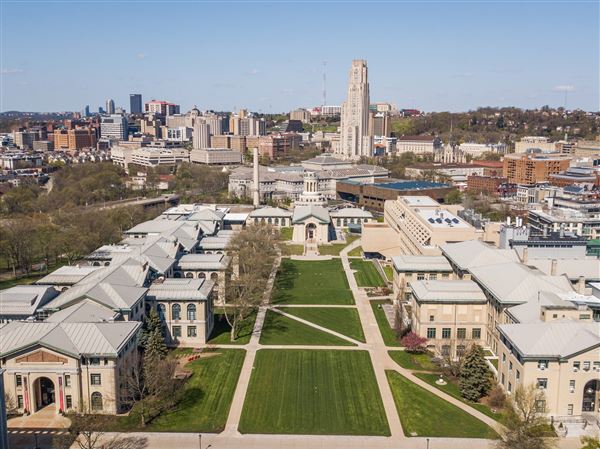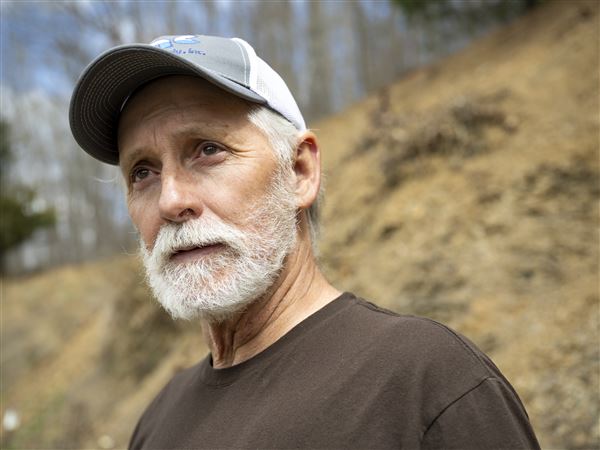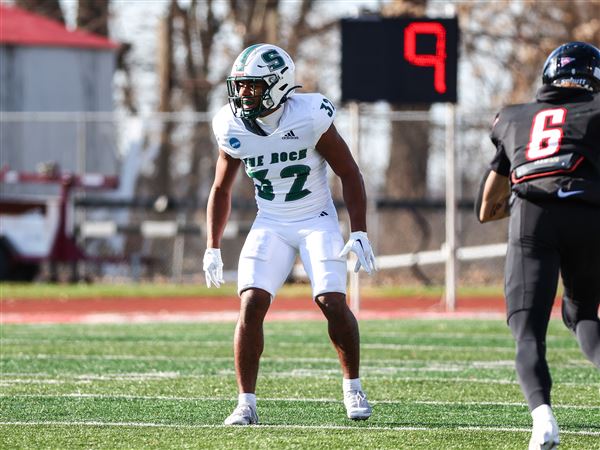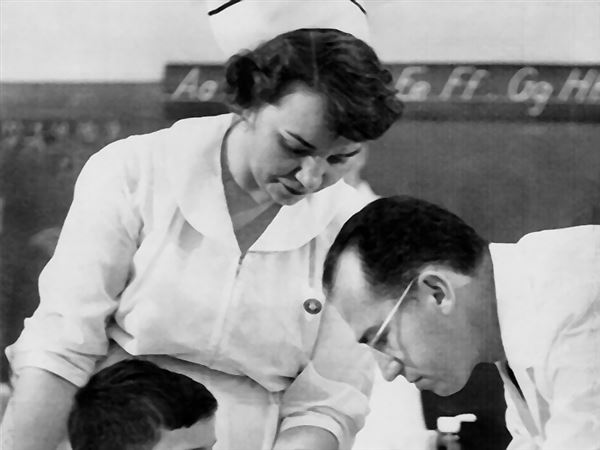Joshua Barney, a naval hero during both the American Revolution and the War of 1812, "died among strangers ... far from the sea he loved," biographer Louis A. Norton wrote in 2000.
Barney became ill near Pittsburgh while traveling by flatboat with family members down the Ohio to his new home in Kentucky. He died and was buried here in 1818. The Maryland native, however, has not been forgotten by residents of Pittsburgh.
Thirty years after his death, his body was moved to a prominent spot in the newly opened Allegheny Cemetery in Lawrenceville. The location is called Mount Barney. In 1880, the cemetery association erected a monument over his remains and those of Lt. James Lawrence Parker, a heroic sailor from the Mexican War.
Commodore Barney will receive additional posthumous honors Aug. 4 when a new memorial plaque will be dedicated during ceremonies attended by several of his descendants.
"He was a very complex man," Caroline Bradford, 87, said of her ancestor. "He was very persistent in following what he thought was right," she said. "He was very patriotic and also somewhat arrogant. I think we need to overlook that."
Mrs. Bradford, a retired nurse, lives in Mechanicsville, Md., not far from where her ancestor fought some of his battles. She plans to attend the Pittsburgh program with her daughter, Clara Stark; sister, Mary Ann Stockstill; and niece, Mary Jane Stockstill. Mrs. Brad- ford is Barney's direct descend ant, eight generations removed.
The event at the cemetery results from cooperation among several Maryland and local organizations that seek to honor the memories of men and women involved with the founding of the United States.
Joshua Barney, born in 1759, is in a very small group of people who won renown for military service in both the American Revolution and the War of 1812, according to Lou Raborg, president of the Maryland Society of the Sons of the American Revolution. This year marks a good time to honor Barney for at least two reasons, he said.
First, the country is marking the 200th anniversary of the start of the War of 1812. That conflict between the United States and Great Britain often is referred to as the second war for independence, he said.
It also is a presidential election year. "Men like Barney helped to found a country and gave us the freedoms we enjoy today," he said. "They gave us the right -- and responsibility -- to vote."
Mr. Raborg has his own family connection to Barney. His direct ancestors, the father and son team of coppersmiths, Christopher Raborg Sr. and Christopher Raborg Jr., provided copper, brass and tin goods to privateers, including Barney, from their shop on Baltimore's Water Street. Their business journal for the years 1783 to 1811 includes the sea captain's signature. "My ancestors knew and did business with Barney," Mr. Raborg said.
Privateers were sort of legal pirates, private individuals authorized by their governments to disrupt trade and capture enemy ships. Profits for the crews and their investors came from the sale of the ships' cargoes.
The new, 10-by-24-inch marker to be placed next to Barney's existing monument is being provided by the Col. John Eager Howard Chapter of the Maryland Society of the Sons of the American Revolution. John Eager Howard, a contemporary of Barney, was a Revolutionary War soldier who later served as governor of and senator from Maryland.
Each year the organization selects a different project to memorialize a Revolutionary War-era patriot, chapter President Christos Christou Jr. said. The decision to work with the Maryland Daughters of the American Revolution on the Barney memorial pleased him, because he also serves as his state's president of the War of 1812 Society.
Born in 1759, Joshua Barney first went to sea in 1771 at age 12. By 1775 he was second-in-command of a merchant ship captained by his brother-in-law during an Atlantic crossing. After his brother-in-law died during the voyage, Barney took over and successfully sailed into the port of Nice.
When customs officials attempted to cheat the young captain and his crew, family lore reports that Barney crossed the Alps and successfully appealed that unfair decision to a French trade minister in Paris, Mrs. Bradford said. "He was always willing to fight for what he thought was right -- even at that young age that was a dominant feature of his personality," she said.
He joined the Continental Navy in 1776 and served on several warships. Taken prisoner several times, he was exchanged or escaped. His most famous action came late in the war when as captain of the warship Hyder Ally, he and his crew captured the better-armed HMS General Monk.
After the American Revolution, he joined the French Navy. At the start of the War of 1812 he first harassed British shipping as a privateer and then rejoined the U.S. Navy.
In the summer of 1814 he was involved in battles on both land and sea as part of an ultimately unsuccessful defense of Washington from a British attack.
Commanding a Chesapeake Bay flotilla, he delayed the enemy advance, but finally he was ordered to scuttle his ships to prevent their capture. A few days later Barney commanded several hundred Marines at the Battle of Bladensburg, Md. That engagement, on Aug. 24 just outside Washington, is often referred to as the "Bladensburg Races," because many of the American troops fled in panic. Barney's Marines, however, continued to fight until their leader was shot in the thigh and captured. The ball was embedded so deep that it could not be removed and his wound never healed.
Barney married twice and had several children with each wife. Mrs. Bradford, her sister and their many cousins are descended from Joshua's son, William Henry Barney. Following the death of Joshua Barney in Pittsburgh, his widow, Harriet, and their three children continued on to Kentucky. Mrs. Bradford said her branch of the family knows nothing more about what happened to them.
Another organization involved in planning and supporting the new Barney memorial is a Daughters of the American Revolution chapter in Maryland named for the naval hero. Julia Williams is the regent, which is the equivalent of president, of the Commodore Joshua Barney-John Eager Howard Chapter of the DAR. She estimated that about four dozen people will make the five-hour journey from Maryland for the Aug. 4 ceremony.
In April her chapter took part in a program in remembrance of John Eager Howard at Old St. Paul's Cemetery in Baltimore, where he is buried. It seemed fitting for DAR members to participate in a similar service to honor Barney, Ms. Williams said. "This project became a personal goal for my regency," she said.
The dedication ceremony for the new Joshua Barney memorial in Allegheny Cemetery is scheduled for 1 p.m. Aug. 4. and is open to the public. Participants will include a Sons of the American Revolution color guard. Its members will be dressed in blue and red uniforms like those worn in 1779 by Continental Line soldiers from Pennsylvania, Maryland, Virginia and Delaware units.
Joshua Barney's grave on Mount Barney can be reached most easily via the cemetery's Butler Street entrance, 4734 Butler St., Lawrenceville. Mount Barney is at the intersection of cemetery sections 7, 81/2 and 11.
More information about him is available in a biography published in 2000 called "Joshua Barney: Hero of the Revolution and 1812."
For details about the Aug. 4 program, contact Julia Williams at darisfun@gmail.com or Christos Christou Jr. at cchristousoc@gmail.com.
First Published: July 22, 2012, 8:00 a.m.
















